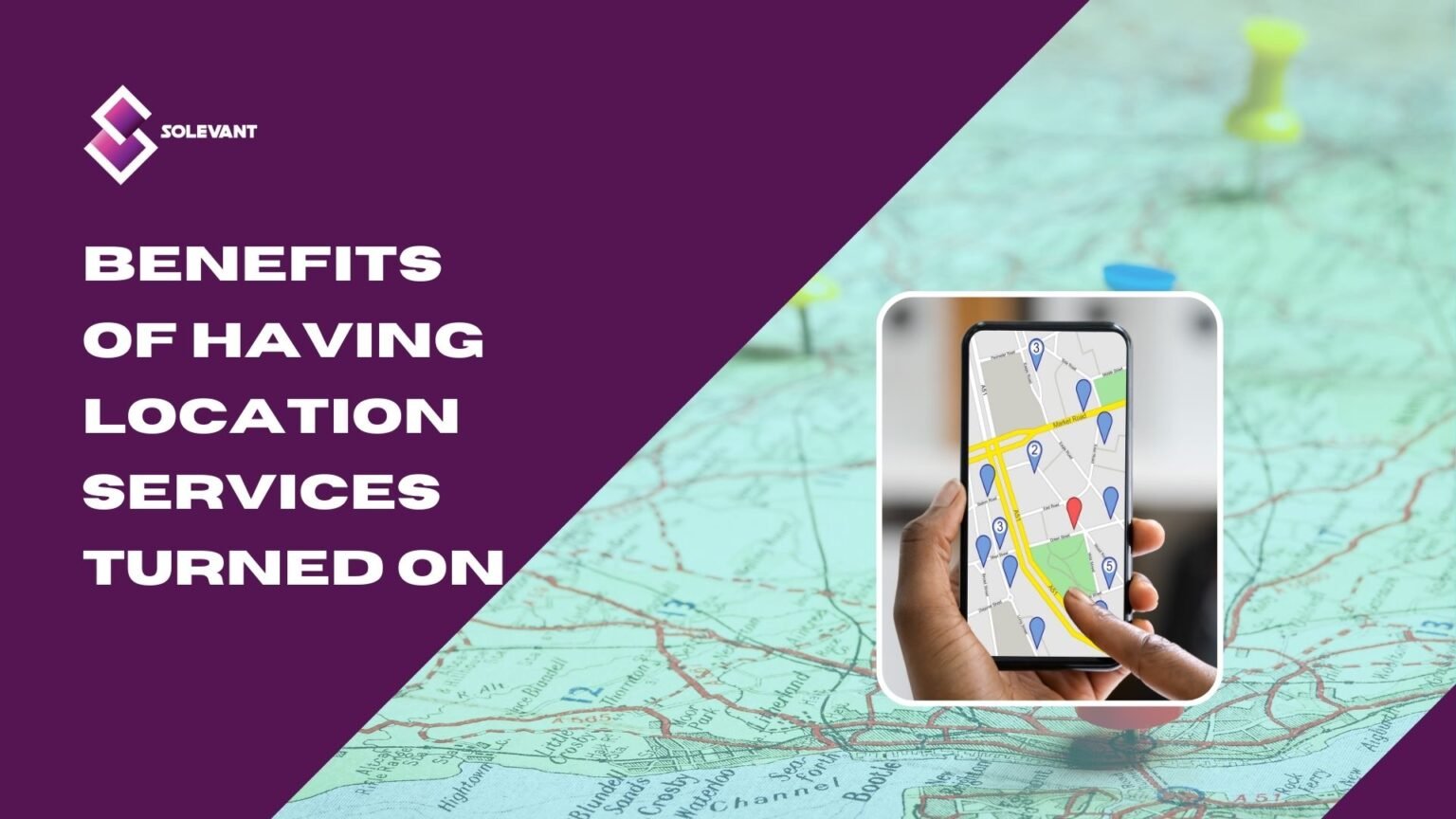Have you ever wondered, when you use a location app to find where something is, what makes it work? It’s like magic, right? But it’s not magic at all – it’s a super cool thing called a “Location-Aware Application”.
Imagine your app is like a little detective that can understand where you are and help you find things nearby. That’s how cool a location-aware application is. But is that everything a location-aware application does?
In this blog post, we’re going to explore the amazing world of these apps. We’ll find out how they know where you are, why they’re so handy, and even uncover some fun facts about how they make life easier.
Understanding Location-Aware Applications
To put it simply, a location-aware application is a software program designed to gather, process, and utilize geolocation data to provide context-aware information and services to users.
These applications leverage a user’s geographical position to deliver personalized and relevant content, services, or functionalities. This integration of real-time location data enables users to experience a level of personalization and convenience that was once unimaginable.
Here’s how it works:
Utilization of Geolocation Data
Location-aware applications tap into the geolocation data of a user’s device, which is primarily obtained through technologies like GPS (Global Positioning System), Wi-Fi positioning, cellular network data, and even Bluetooth beacons.
By accurately pinpointing the user’s location, these applications are able to tailor their services to the user’s immediate surroundings. This might include providing directions, showing nearby points of interest, offering location-based recommendations, or creating geotagged content.
Diverse Industries and Sectors:
The influence of location-aware applications extends across a wide range of industries and sectors, transforming the way we engage with technology in our daily lives. These applications have found their way into navigation and mapping, social networking, marketing, gaming, health and fitness, travel, and more.
For instance, mapping applications like Google Maps and Waze revolutionize navigation, while location-based social networks such as Foursquare and Yelp connect people with similar interests in the same vicinity.
Key Components of Location-Aware Applications
Location-aware software comprises essential elements that enable its magic. Let’s break down the components of this amazing app:
GPS and Positioning Technologies
Global Positioning System (GPS) is the backbone of many location-aware applications. By connecting to a network of satellites, GPS enables devices to determine their precise geographic coordinates, thereby enabling accurate location tracking and navigation.
In addition to GPS, other positioning technologies like GLONASS, Galileo, and BeiDou contribute to enhancing accuracy and reliability, especially in areas with challenging signal conditions.
Sensors for Accurate Motion Detection
Sensors like accelerometers and gyroscopes within smartphones and other devices play a crucial role in detecting motion and orientation changes.
These sensors help in determining whether a user is walking, running, or driving, aiding the application in adjusting its behavior accordingly. This ensures that the app provides accurate and contextually relevant information based on the user’s activity.
Geofencing and Geolocation APIs
Geofencing is a powerful feature that enables applications to define virtual boundaries around specific geographic areas. When a user enters or exits these predefined zones, the app can trigger specific actions or notifications.
Geolocation APIs, on the other hand, allow developers to integrate location-related functionalities into their applications, such as retrieving coordinates, calculating distances, and displaying maps.
Data Sources: Maps, Satellite Imagery, Location Databases
Location-aware applications heavily rely on data sources like maps, satellite imagery, and location databases. These sources provide the necessary geographic information that allows the app to visualize and interact with the surroundings accurately. Satellite imagery, for instance, can help users identify landmarks and navigate with ease.
User Permission and Privacy Considerations
User consent and privacy are paramount in location-aware applications. These apps must seek permission from users before accessing their geolocation data.
Striking a balance between providing valuable services and ensuring user privacy is a significant challenge that developers and service providers continually address. Regulations like GDPR (General Data Protection Regulation) and CCPA (California Consumer Privacy Act) emphasize the importance of transparent data handling practices.
Types of Location-Aware Applications
There are various types of location-aware software, each catering to specific needs and interests.
These applications harness the power of geolocation data to provide us with experiences that are relevant, engaging, and seamlessly integrated into our daily routines. They are:
Navigation and Mapping Apps
Navigation applications like Google Maps, Apple Maps, and Waze are perhaps some of the most well-known examples of location-aware technology. These apps use real-time GPS data to provide turn-by-turn directions, route optimization, and traffic updates, ensuring that users reach their destinations efficiently.
Location-Based Social Networking Apps
Apps like Facebook’s Nearby Friends, Tinder’s location-based matching, and Bumble’s BFF mode leverage geolocation to connect users with people in their vicinity. This category fosters real-world connections by enabling users to meet up, interact, and share experiences based on their current locations.
Geotagging and Location-Based Photo-Sharing Apps
Instagram, Snapchat, and other social media platforms have integrated geo tagging features that allow users to tag their posts with their current location. This not only adds context to their content but also enables users to explore and discover posts from specific locations.
Location-Based Gaming and Augmented Reality (AR) Apps
Games like Pokémon GO exemplify the fusion of augmented reality and location-awareness. These apps overlay virtual elements onto the real world, encouraging users to explore their surroundings to discover and interact with in-game items and characters.
Location-Based Marketing and Personalized Offers
Retailers and businesses utilize location-aware applications to send targeted offers and promotions to users when they are in proximity to their stores. This not only enhances user engagement but also fosters customer loyalty through personalized experiences.
Fitness and Health Apps
Fitness and health applications leverage geolocation to track users’ physical activities like running, cycling, and hiking. These apps provide insights into distance covered, elevation gain, and other location-specific metrics, empowering users to monitor and improve their fitness levels.
How Location-Aware Applications Work
It’s not everyone that fully understands how location-aware applications work. This section unveils the behind-the-scenes wizardry, offering a simplified insight into the fascinating mechanics that make location-aware applications an integral part of our digital lives.
Triangulation and Trilateration Methods
One of the fundamental techniques for determining user location is through triangulation and trilateration.
Triangulation involves measuring angles between a user’s device and known landmarks, while trilateration calculates distance by measuring signal strength from multiple signal sources (such as satellites or cell towers). By combining these techniques, the application can pinpoint the user’s location with reasonable accuracy.
Interaction with Satellites and Cellular Towers
Global Positioning System (GPS) satellites play a critical role in location-aware applications. These satellites continuously broadcast signals that devices can receive to calculate their position. Cellular towers also contribute to positioning by triangulating the signal strength of nearby towers and determining the user’s location based on their proximity to these towers.
A-GPS (Assisted GPS)
A-GPS enhances the performance of standard GPS by utilizing assistance data from nearby cell towers and Wi-Fi networks. This data helps devices acquire satellite signals faster and improves positioning accuracy, which is particularly useful in urban environments with obstructed satellite visibility.
Wi-Fi Positioning and Bluetooth Beacons
For indoor and dense urban environments where GPS signals might be weak or unreliable, location-aware applications turn to alternative methods like Wi-Fi positioning and Bluetooth beacons.
Wi-Fi positioning involves detecting the user’s proximity to known Wi-Fi networks, while Bluetooth beacons are small devices that emit signals that can be used to determine the user’s location indoors or in confined spaces.
Fusion of Sensor Data
Modern smartphones are equipped with a variety of sensors, including accelerometers, gyroscopes, and magnetometers. These sensors provide data about the device’s movement, orientation, and direction.
By combining sensor data with other location data sources, applications can refine the user’s location accuracy and orientation, contributing to a more immersive and precise experience.
Benefits of Location-Aware Application
Location-aware applications have revolutionized how we interact with the world around us, offering a multitude of benefits that enrich our daily experiences and redefine convenience.
Improved Navigation and Travel Experiences
Navigation apps have transformed the way we traverse unfamiliar territories. With real-time traffic updates, alternative routes, and accurate arrival estimates, these applications streamline travel and save us precious time.
Enhanced Social Interactions and Networking
Location-based social networking apps foster connections beyond the digital realm. They facilitate serendipitous encounters and interactions by allowing users to meet like-minded individuals nearby, ultimately expanding our social circles and forging real-world relationships.
Tailored and Relevant Content Delivery
Location-aware applications curate content and services based on our physical whereabouts, ensuring that we receive information that is pertinent to our immediate context. From restaurant recommendations to local events, these apps offer personalized experiences that resonate with our interests.
Efficient Resource Utilization
Location-aware technology plays a significant role in optimizing resource usage. Ride-sharing services efficiently match drivers with passengers heading in the same direction, leading to reduced traffic congestion and environmental impact. Additionally, smart city initiatives use location data to manage energy consumption and waste disposal more effectively.
Engaging and Immersive Gaming and Entertainment
Gaming and entertainment apps that leverage location data create captivating and interactive experiences. Augmented reality (AR) games like Ingress and Pokémon GO encourage users to explore their surroundings, turning the real world into a gaming playground.
Challenges of Location-Aware Application
While the benefits of location-aware applications are evident, they also present challenges that require careful consideration and mitigation. These include:
Privacy Concerns and Potential Misuse of Location Data
The collection and utilization of geolocation data raise valid privacy concerns. Users worry about their data being misused, shared without consent, or used for intrusive advertising. Striking a balance between providing personalized services and safeguarding user privacy remains a critical challenge.
Battery Drain and Resource Consumption
Continuous use of location services can drain device batteries rapidly. Additionally, the processing power required to collect and analyze location data contributes to resource consumption, impacting both battery life and data usage.
Data Accuracy and Reliability Issues
Location accuracy can vary based on factors like signal strength, obstructed views of satellites, and the availability of Wi-Fi networks. This variability can lead to inaccuracies in determining a user’s position, affecting the overall user experience.
Regulatory and Legal Considerations
Location-aware applications are subject to regulatory frameworks like GDPR (General Data Protection Regulation) and CCPA (California Consumer Privacy Act), which emphasize user consent, transparent data handling, and the right to be forgotten. Navigating these regulations while providing seamless services is a significant challenge.
Future Trends and Developments
The landscape of location-aware applications is poised for dynamic evolution, driven by emerging technologies and changing user expectations.
Integration with Emerging Technologies
The integration of location awareness with technologies like 5G, IoT (Internet of Things), and blockchain promises to unlock new possibilities. 5G’s low latency and high bandwidth enable more real-time and data-intensive location experiences, while IoT devices will contribute to a more interconnected and sensor-rich environment.
Continued Growth of AR-Based Location Experiences
Augmented reality will continue to shape the future of location-aware applications. We can expect more immersive and interactive experiences that seamlessly merge the physical and digital worlds, enhancing everything from navigation to education and entertainment.
More Sophisticated Indoor Positioning Systems
As we spend significant portions of our time indoors, the development of accurate and reliable indoor positioning systems will be a focus. This will enable applications to provide location-based services within malls, airports, museums, and other indoor spaces.
Balancing Personalization with Privacy
The future will witness advancements in algorithms that strike a better balance between personalized experiences and user privacy. Technologies like differential privacy and federated learning will allow applications to provide tailored content without compromising sensitive data.
Conclusion
The realm of location-aware applications continues to expand, reshaping how we interact with technology, our surroundings, and each other. While these applications bring forth numerous benefits, they also pose challenges that need to be addressed responsibly.
As the technological landscape evolves, our understanding of location-aware applications will deepen, allowing us to harness their potential while ensuring ethical data usage and safeguarding our privacy. As users, we are poised to witness and participate in the ongoing transformation of our digital and physical worlds through the lens of location-awareness.
Author
-
I help businesses increase revenue with data-driven content marketing strategies that engages their audience. Looks like what you want? Let's talk.







